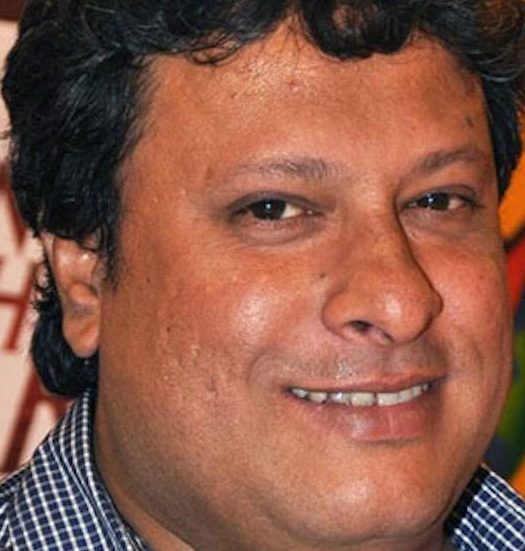Filming In Digital Format Was a Challenge – Santosh Thundiyil

Cinematographer Santosh Thundiyil
A Gangster falling in love with a damsel diva is a cliched story, which was also the story line of the latest release ‘Jayantabhai ki Luv Story’. A romantic comedy, it was a small budget film directed by debutant Vinnil Markan and master cinematographer Santosh Thundiyil made his directorial project look sensually appealing with the star casts of Vivek Oberoi and Neha Sharma.
Having worked with first time directors Karan Johar in ‘Kuch Kuch Hota Hai’ and Abhishek Sharma ‘Tere Bin Laden’, working with Vinnil Markan in ‘Jayantabhai ki Luv Story’ was another learning experience for Santosh Thundiyil, ‘the best part about working with debutant directors is that they are open to suggestions. He had a lot of experience in making music videos before, so he had a good understanding of filmmaking and clear vision of how he wanted the film to be. He kept the things under control through his planned approach’, says DOP on his experience of working with Vinnil Markan.
The look of the film is real and organic, which was what Santosh was briefed about the film before he began shooting. ‘It’s a small time gangster film with a very low budget and that is why the film was to be shot in real locations. So we broke down the shots and decided which camera lenses to be used and how the scenes would be shot in advance’.
‘Jayantabhai ki Luv Story’ was shot in a digital format using Arri Alexa camera and Ultra Prime Lenses. ‘It was a challenge for me to shoot a feature film using a digital camera since I have never done it before though I have shot couple of projects in digital format but not a feature film. Initially we had planned to shoot the movie in 16mm but I preferred using Arri Alexa considering the filmmaking evolution and thought that somewhere I have to start working on it. I learnt that digital format has much better control than shooting in 16mm. On screen, people won’t realise much difference in what format the film was shot,’ asserts Thundiyil.

DOP Santosh Thundiyil with actors Vivek Oberoi and Neha Sharma on set
When asked about the most difficult part of the shoot, the cinematographer instantly recalls, ‘the song ‘Aa Bhi Jaa Mehermaan’ was shot in Dubai on sand dunes in 48 degree Celsius, amidst heavy wind. Sand storm made it difficult for us to film it. We were not able to move ourselves then let alone moving a camera. Makeup and hair of the artists all became mess, camera lenses got covered with sands, and on top of that the song had to look romantically sensuous on screen. But somehow we managed to cover the sequences. When you see the song, you won’t make out much of the difficulties we had. We completed the song in around two to three days’.
Seventy per cent of the film was shot on real locations while only 30 per cent was shot on a small set. Hence, the natural lights were supplemented with additional lights whenever required. ‘I tried to work with minimal objects. I don’t prefer too much complicated equipment around me and I get good results with my minimalistic approach. I supplemented the natural lights whenever I needed,’ articulates the ace cinematographer.
Since the budget of the film was low, there was hardly any special effect (VFX) used in it except the action sequences and a song which was done with Chroma screen, to put a view of a city later.
The shoot of the film began in April 2012 and had a 45 days schedule with breaks. The colour correction and DI of the movie was done in Prasad Labs.


